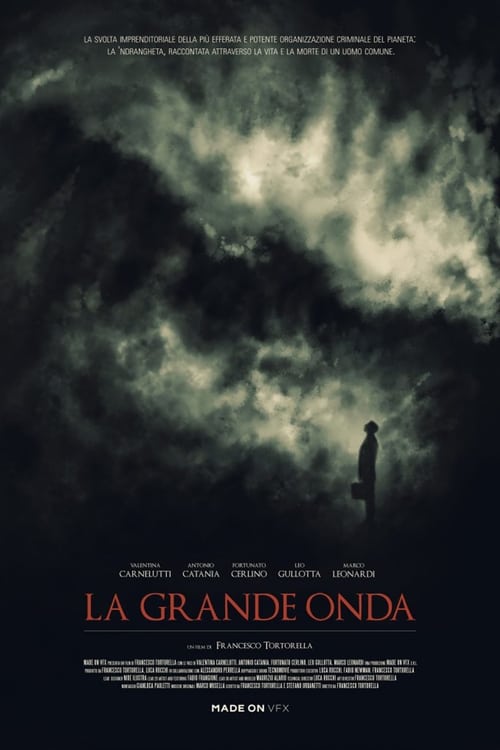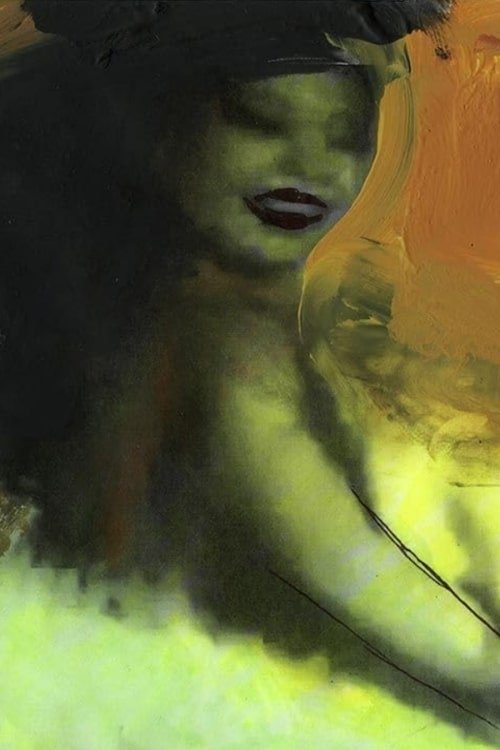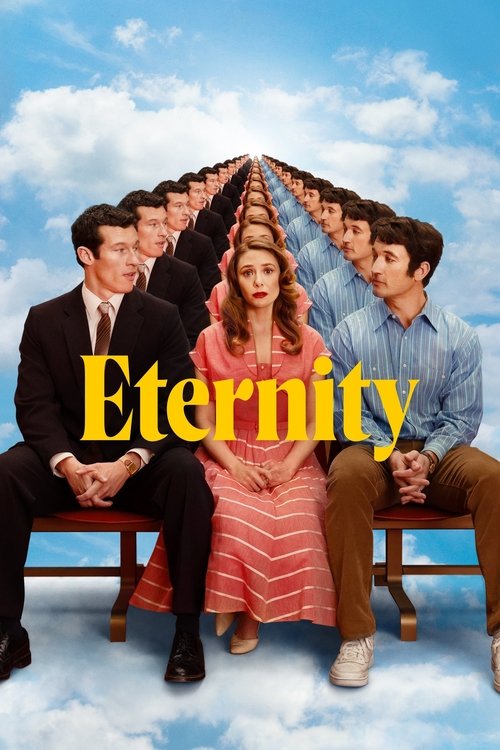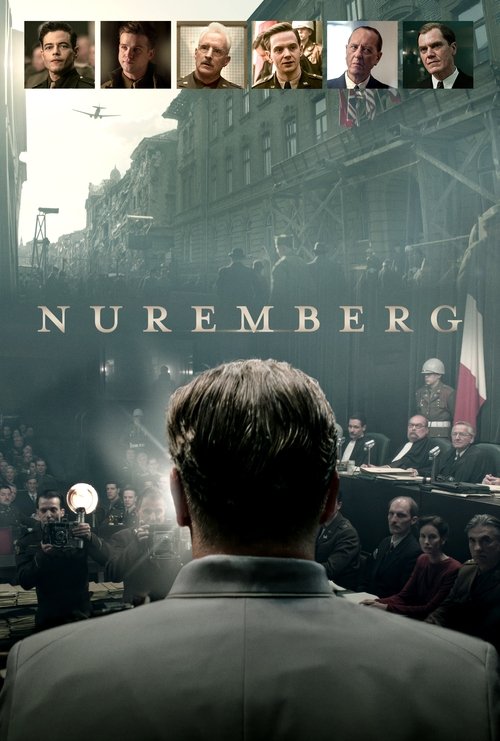
Ask Your Own Question
What is the plot?
"Vote for Santa" (2021) opens on a cold December evening in a small American town, where the Christmas season is in full swing but tinged with an undercurrent of unease. The story centers on Santa Claus, played by Lance Henriksen, who is not the jolly old man of legend but a complex figure whose presence carries both warmth and mystery. The film introduces Jenna (Natasha Henstridge), a determined local journalist, Ella (Natalie Shinnick), a young girl with a keen sense of intuition, and Mike (Leonardo Cecchi), a skeptical but good-hearted man caught in the unfolding drama.
The film begins with Santa arriving in town on December 1st, setting up his workshop and preparing for the annual Christmas festivities. The town's excitement is palpable, with streets adorned in twinkling lights and the scent of pine and cinnamon filling the air. Jenna, working on a feature story about the true spirit of Christmas, is drawn to Santa's enigmatic character. She interviews him in his workshop, where the walls are lined with toys and letters from children, but beneath the surface, something feels off.
Early in the narrative, a mysterious death shakes the community. On December 5th, Mike discovers the body of a local man, Mr. Thompson, in the snow near the town square. The cause of death is unclear, but suspicion quickly falls on Santa due to his recent arrival and secretive behavior. Mike confronts Santa, who cryptically replies, "Sometimes, the spirit of Christmas demands sacrifices." This chilling line sets a dark tone, contrasting sharply with the festive backdrop.
Jenna, skeptical of the accusations, digs deeper. She uncovers that Mr. Thompson was involved in corrupt dealings that threatened the town's harmony. Her investigation leads her to Ella, a perceptive child who claims to have seen shadowy figures lurking near the scene. Ella's innocence and vivid descriptions add layers of tension, as she tells Jenna, "Santa isn't just bringing gifts this year. He's here to judge."
As the days progress, the town's festive cheer diminishes. On December 10th, another death occurs--this time, a member of the Christmas committee, Mrs. Caldwell, is found strangled in her home. The killer leaves a cryptic note signed "Santa," deepening the mystery. Jenna and Mike team up to uncover the truth, their uneasy alliance marked by sharp exchanges and growing trust. Mike admits, "I wanted to believe in the magic, but now I'm not so sure."
The plot thickens with the revelation that Santa is not a single person but a mantle passed down through generations, each tasked with delivering justice during the holiday season. This secret is unveiled when Jenna finds an ancient book hidden in Santa's workshop, detailing the lineage and the dark duties tied to the role. Santa, portrayed by Henriksen with a blend of gravitas and weariness, confronts Jenna, saying, "The world needs more than cheer; it needs balance."
Tensions escalate as Jenna, Mike, and Ella piece together a pattern: those who have died were involved in harming the town's innocent or exploiting the Christmas spirit for selfish gain. Santa's actions, though brutal, are framed as a harsh form of vigilante justice. This moral ambiguity drives the narrative forward, with Jenna wrestling between exposing Santa and understanding his purpose.
The climax unfolds on Christmas Eve, December 24th, in the town's central square during the annual Christmas festival. The atmosphere is thick with snow and anticipation. Jenna confronts Santa publicly, accusing him of murder. Santa responds calmly, "I am the shadow that protects the light." At that moment, Mike is attacked by an unknown assailant, who is revealed to be a corrupted former Santa, jealous and vengeful, seeking to usurp the mantle through violence.
A fierce confrontation ensues beneath the glow of the giant Christmas tree. Santa and the imposter engage in a brutal fight, their struggle a symbolic battle between justice and corruption. The imposter attempts to kill Ella, but Santa intervenes, sacrificing himself to save her. Santa's death is poignant; as he falls, he whispers to Ella, "Keep the faith, child. The spirit never dies."
In the aftermath, Jenna and Mike vow to protect the town's true spirit of Christmas, honoring Santa's legacy. Ella, now the keeper of the ancient book, is seen placing a letter in the mailbox addressed to "The Next Santa." The film closes on December 25th, with the town bathed in morning light, a sense of hope mingled with the bittersweet loss.
Every major death is accounted for: Mr. Thompson killed off-screen by unknown assailants linked to his corruption; Mrs. Caldwell strangled by the current Santa as a form of judgment; the corrupted former Santa dying in the final fight, killed by Santa Henriksen's character; and finally, Santa himself dying heroically to save Ella.
Key revelations include Santa's true identity as a mantle, the moral complexity of his actions, and the existence of a corrupted former Santa antagonist. The film's resolution leaves the door open for the spirit of Santa to live on through Ella, blending darkness and hope in a uniquely somber Christmas tale.
This detailed narrative captures the full arc of "Vote for Santa" (2021), including all deaths, confrontations, and plot twists, culminating in a dramatic and emotionally charged conclusion.
More Movies Like This
Browse All Movies →What is the ending?
In the ending of "Vote for Santa," the small town comes together to support Santa in his campaign for mayor. After a series of challenges and a heartfelt speech, Santa wins the election, bringing joy and unity to the community. The townspeople celebrate, and Santa embraces his new role, promising to bring the spirit of Christmas to the town year-round.
As the final act unfolds, the scene opens with the town hall filled with anxious townsfolk, all gathered to hear the results of the mayoral election. The atmosphere is thick with anticipation, and the camera pans across the faces of the community members, revealing a mix of hope and anxiety. Santa, dressed in his iconic red suit, stands at the front, his expression a blend of determination and warmth. He has fought hard for this position, not just for himself but for the community he loves.
The election results are announced, and the tension in the room is palpable. As the mayoral candidate opposing Santa is declared, a hush falls over the crowd. However, when Santa's name is called as the winner, a wave of joy erupts. The townspeople cheer, and the camera captures the jubilant expressions of children and adults alike, their faces lighting up with happiness. Santa, overwhelmed with emotion, steps forward to address the crowd.
In his speech, Santa expresses gratitude for the support he has received and emphasizes the importance of community and togetherness. He speaks from the heart, sharing his vision for the town, which includes fostering kindness, generosity, and the spirit of Christmas throughout the year. His words resonate deeply with the audience, and many are seen wiping away tears of joy.
As the celebration continues, the scene shifts to various townsfolk embracing one another, sharing in the victory. The camera captures key characters: the local baker, who had initially doubted Santa's capabilities, now beams with pride; the children, who had campaigned tirelessly for Santa, jump up and down in excitement; and the elderly couple who had been skeptical of change, now smiling and nodding in approval.
In the final moments, Santa is seen surrounded by his supporters, including his close friends who helped him throughout the campaign. They lift him onto their shoulders, parading him around the town square. The festive decorations twinkle in the background, and the spirit of Christmas is palpable. Santa looks around, taking in the joy and unity of the community, his heart swelling with pride and happiness.
As the credits begin to roll, the final scene shows Santa in his new office, a cozy space adorned with holiday decorations. He sits at his desk, a smile on his face, ready to take on the responsibilities of his new role. The camera zooms out, revealing the town bustling with life, a place transformed by the power of belief and community spirit. The film closes on a hopeful note, emphasizing that with love and unity, anything is possible.
Is there a post-credit scene?
In the movie "Vote for Santa," there is indeed a post-credit scene that adds a light-hearted touch to the film's conclusion. After the credits roll, the scene opens in a festive setting, with snow gently falling outside a cozy, decorated cabin. Inside, we see Santa Claus, played by the film's lead, sitting at a table surrounded by a group of cheerful elves. They are reviewing the results of the election in a playful manner.
As the camera zooms in, Santa holds up a large, colorful chart displaying the votes, and the elves cheer and clap, celebrating the outcome. Santa, with a twinkle in his eye, turns to the camera and says, "Remember, the spirit of giving is what truly counts!" He then winks, and the scene shifts to a montage of the elves preparing gifts for children around the world, showcasing their teamwork and joy.
The scene encapsulates the film's themes of community, joy, and the importance of kindness, leaving the audience with a warm feeling as they exit the theater. The playful banter among the elves and Santa's infectious laughter create a sense of camaraderie and holiday spirit, reinforcing the film's message about the power of unity and goodwill.
What motivates the main character to run for office in Vote for Santa?
The main character, a Santa Claus impersonator named Nick, is motivated by a desire to bring joy and a sense of community to his town during the holiday season. He feels that the current political climate is lacking in cheer and unity, and he believes that by running for office, he can inspire others to embrace the spirit of giving and togetherness.
How does the town react to Nick's candidacy?
Initially, the town is skeptical of Nick's candidacy, viewing it as a whimsical joke rather than a serious political campaign. However, as Nick begins to engage with the community, sharing his vision of a more joyful and inclusive town, many residents start to rally behind him, drawn to his genuine passion and the hope he represents.
What challenges does Nick face during his campaign?
Nick faces several challenges during his campaign, including opposition from a rival candidate who embodies the traditional political establishment. He also struggles with self-doubt and the pressure of living up to the expectations of being Santa, as well as the logistical hurdles of running a campaign while maintaining his job as a Santa impersonator.
Who are the key supporting characters that help or hinder Nick in his campaign?
Key supporting characters include Nick's best friend, who serves as his campaign manager and provides comic relief, and a local journalist who initially doubts Nick but eventually becomes an ally. Additionally, there are townsfolk who either support him with enthusiasm or oppose him due to their own vested interests, creating a dynamic backdrop for his campaign.
What role does the holiday spirit play in the development of the plot?
The holiday spirit is central to the plot, influencing Nick's campaign message and the community's response to him. As Nick promotes themes of kindness, generosity, and togetherness, the holiday spirit becomes a catalyst for change, uniting the townspeople and transforming the campaign into a celebration of their shared values and hopes for a better future.
Is this family friendly?
"Vote for Santa," produced in 2021, is generally considered a family-friendly film. However, there are a few scenes and aspects that might be potentially objectionable or upsetting for children or sensitive viewers:
-
Political Tension: The film revolves around a political campaign, which may include discussions or depictions of rivalry and conflict that could be intense for younger viewers.
-
Emotional Struggles: Characters experience moments of disappointment and frustration related to the election process, which may evoke feelings of sadness or anxiety.
-
Conflict Among Characters: There are scenes where characters disagree or argue, which could be unsettling for some children who are sensitive to conflict.
-
Themes of Rejection: Characters face rejection and the fear of not being accepted, which might resonate deeply with sensitive viewers.
Overall, while the film aims to deliver a positive message about community and togetherness, these elements may require parental guidance for younger audiences.

























